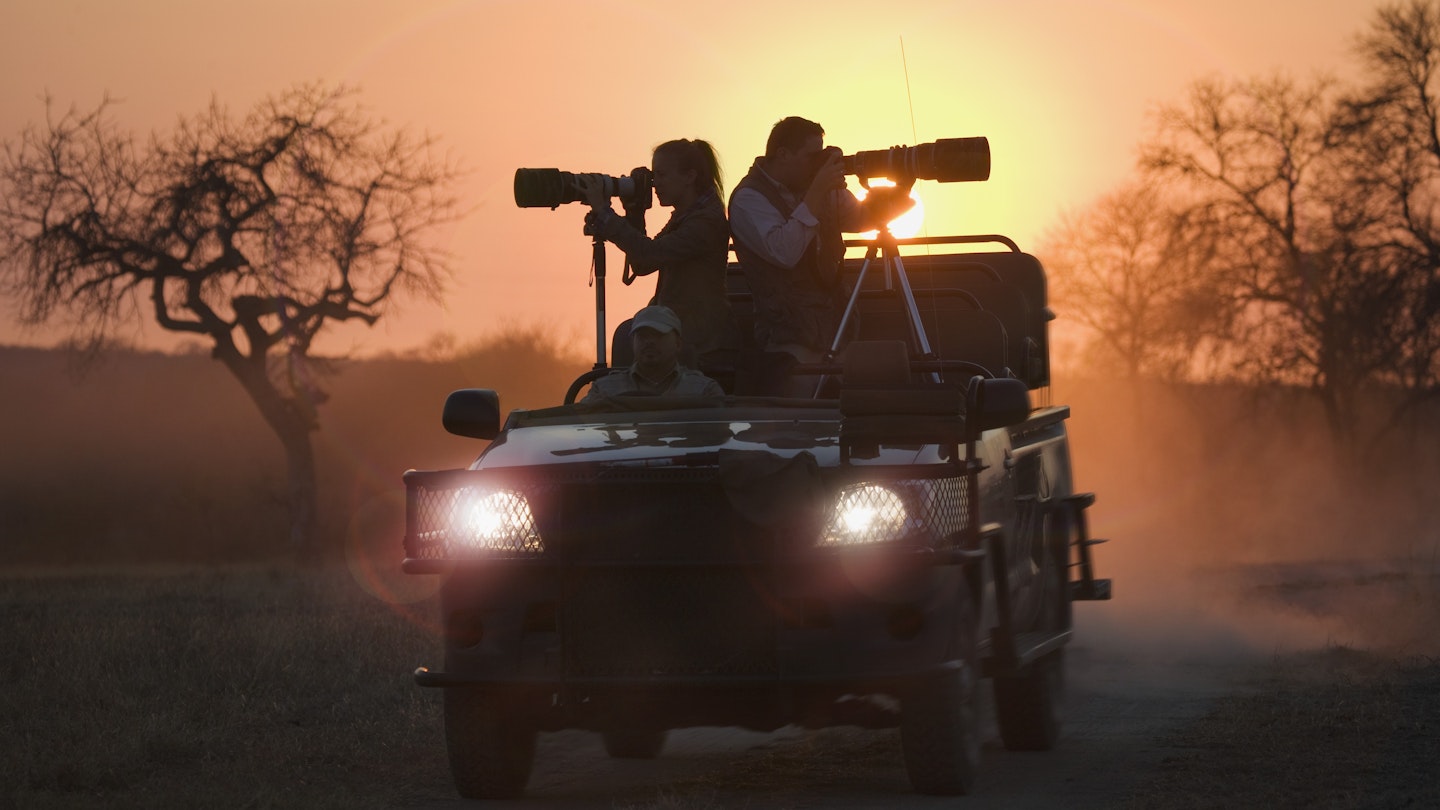1. When to Go
For optimal wildlife watching, winter (June to September) is the prime season as many trees and shrubs are leafless, aiding with visibility. Limited food and water resources also mean that animals are more frequently spotted foraging, hunting, or drinking at waterholes. South Africa’s summer (December to February) brings lush landscapes, but animals often find it challenging to be seen in the dense greenery. This season primarily attracts European holidaymakers seeking warm temperatures.
2. Choosing a National Park
With over 600 parks and reserves in South Africa, there is an option for every type of traveler. Ranging from barren landscapes to lush savannahs teeming with wildlife, you can opt for guided safaris, embark on solo adventures, or find tranquility at a secluded campsite. While many parks cater to all budgets, they can often get crowded. Most parks offer well-maintained roads for you to explore in a rental vehicle. For first-time safari-goers, consider:
- Kruger National Park: As the go-to national park for safaris, it experiences visitor traffic, but its vast size allows you to find quieter corners. Iconic African wildlife is abundant here, and you’ll find a range of accommodations from remote campsites to comfortable bungalows. Staying within the park enhances access to early morning wildlife drives, which are the day’s highlights.
- Hluhluwe-iMfolozi: This park boasts lush scenery combined with expected wildlife sightings. Nestled in Zululand, it reflects the rich culture of the local tribe. Not only does it offer splendid hiking trails, including multi-day itineraries for keen hikers, but it’s also near the beautiful beaches along the Elephant Coast.
3. Choosing a Private Reserve
Opting for a private wildlife reserve primarily revolves around costs, with some places charging thousands of dollars per person daily. However, for those seeking an unparalleled safari experience, private reserve lodges offer:
- Close Proximity to Wildlife: You can expect a more immersive experience without the need to travel long distances before starting your safari. Private reserves usually have few or no fences, and guides can approach sightings more closely, navigating off the dirt tracks.
- World-Class Safari Guides: Guides in private reserves are exceptionally skilled, reading animal footprints like they are stories waiting to be told. In the highest-end lodges, these guides utilize radios to communicate critical wildlife sightings.
- Fewer Crowds: With limited guests per jeep, the intimacy of a smaller group enhances your safari experience. You’ll enjoy more personalized attention from guides and have greater flexibility on how long you can spend observing any given sighting.
- Luxury Settings: Private lodges range in comfort, with some being luxurious retreats frequented by the affluent.
- Customizable Experiences: The wildlife-rich surroundings allow for a variety of activities such as guided treks or specialized tours focusing on specific wildlife.
4. Use a Guide
The expertise of a knowledgeable guide enhances your safari experience significantly. While guides keep you safe from potentially dangerous wildlife, they also help you appreciate the intricate ecosystem of the African bush that you might overlook when exploring alone. Even in national parks, guides enhance your chances of spotting elusive animals.
5. Don’t be a ‘Big Five’ Cliché
While the allure of spotting the ‘Big Five’ (lions, leopards, elephants, Cape buffaloes, and rhinos) is strong, South Africa’s diverse wildlife extends far beyond these famous animals. Consider documenting other unique creatures like zebras, hippos, and giraffes. By focusing on the lesser-known species, you can discover the fascinating intricacies of the ecosystem.
6. Drive or Fly
Traveling directly to Kruger National Park is feasible via flights from Cape Town or Johannesburg. For a more leisurely experience, consider embarking on a driving adventure to explore South Africa’s beautiful scenery and rich cultural sites. The drive from Johannesburg to Kruger or Sabi Sand allows you to experience charming towns like Pilgrim’s Rest along the way.
7. Bring the Right Stuff
Morning safaris can be chilly, especially during winter. Dress in layers, and don’t forget essentials like binoculars for observing distant wildlife. Connectivity may be limited, so pack a book to learn more about the geography and wildlife of the region.
8. Just Relax
Safaris are about enjoying the experience, sometimes in moments of silence. Don’t stress over spotting every animal; take time to appreciate the exquisite landscapes and the vibrant sounds of the wilderness. The most memorable moments may arise when wildlife is absent and you can simply soak in the serenity of nature.
This guide serves as an insightful resource for navigating your upcoming safari adventure in South Africa, enabling you to create unforgettable memories while exploring the richness of its wildlife and landscapes.





